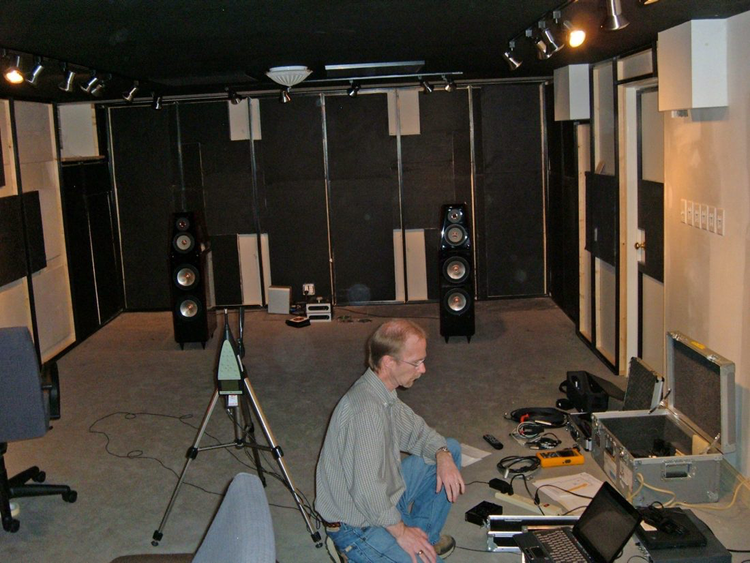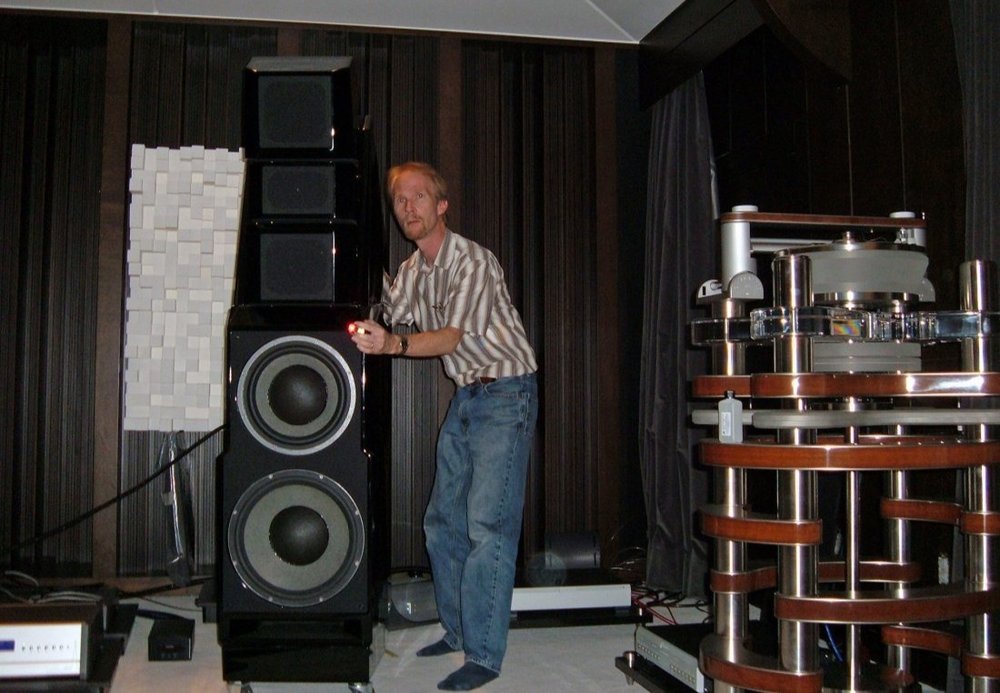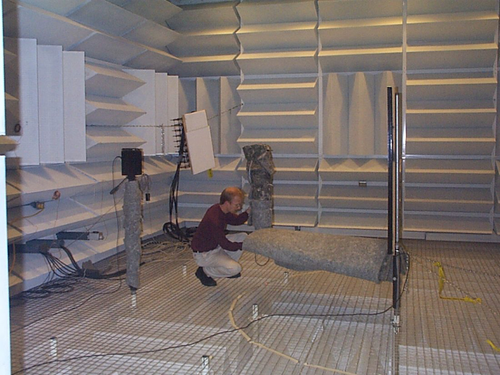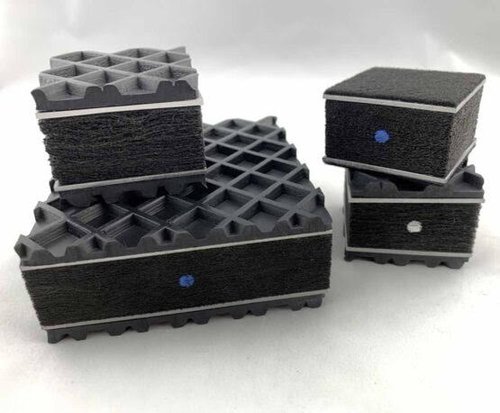
Read Part 1 here.
In Part 1, Norman warned us about the two biggest hurdles audiophiles face: confusion and habit. He also told us about how the acoustic anomalies in our listening rooms are often at the basis of our urges to upgrade our equipment or change our cables—our urges, basically, to fix the problem.
“Let’s talk about common things like modal resonances, early reflections, reverberation times, ambient noise, and signal-to-noise ratio,” said Norman. “These are important issues because they greatly affect the listening experience.
“If these issues aren’t addressed, audiophiles will never be entirely satisfied with what they have and will always go around in circles. If they’ve got a particular frequency that is too excited or too suppressed, they think the problem must be the speakers, the amplifier or the cables. Let’s try this new cable! Let’s try this amplifier and see if that fixes the problem. Well, it might have some different tonalities and you might get a little something. But it’s a filter. It’s never going to correct the underlying issues.

“It’s much wiser to have a clean palate, a clean canvas, a solid foundation to build on. Otherwise, the sound is imbalanced and you’re always trying to find the balance and you’re never going to do it. It’s best to start out with a neutral environment, a starting point.”
I asked what approach should be taken to improve the AC going into our audio systems.
“You should go about it scientifically to find out what’s needed. You don’t just buy a power conditioner. You buy a power conditioner that addresses the one or two specific problems you have. You don’t want to add a filter on top of a filter, so to speak. You don’t try and fix what you don’t need to. You need to test and analyze what the problems are to discover the solutions. Don’t try to correct a non-existent weakness.”
Is a power conditioner even necessary if we have dedicated AC circuits feeding our hi-fi?
“How dedicated? When I think of a real dedicated circuit, I think of an isolated ground. Then, if we talk about dedicated circuits, these can start from the main panel or, better yet, a separately derived system where you’ve got an isolation transformer. These are real dedicated circuits that are not connected to the rest of the house. There will be no noise feedback on these circuits. So, the best approach is to go with a good balanced isolation transformer, which, depending on your needs, can cost between $10,000 and $20,000. Now, again, it depends on how good your power is to begin with. You should have somebody with test equipment come to your house to determine what’s needed.”
“Isn’t $10,000 to $20,000 on an isolation transformer a bit extreme?” I asked.
“You have to take it step by step,” he said. “For example, at one of our clients, the first thing we did was improve his ground. His ground resistance was too high. He now has less than 5 Ohms of resistance. To that we added three grounding electrodes. It was a simple, inexpensive solution that made a difference.

“Afterwards, we ran three dedicated circuits with high quality cable and an isolated ground. That made a huge difference. The client was very happy. He’s got a good ear and good equipment, but his system was choked. Another limiting factor was the positioning of the speakers.”
Was speaker placement the most common issue?
“I would say that, taken together, the placement of the listener and the speakers is the number one issue. And, often, there are constraints because of the room’s dimensions or décor. No room is perfect, not even a dedicated one. But you can make your room sound much better.”
Norman offers a variety of treatments to those in search of better acoustics. I asked him what the process was should someone wish to engage his services.

“First, I’d recommend going in stages,” he said. “There’s a hierarchy to follow because, again, you don’t know what you’re doing unless you start at the beginning, and that’s going to be listener and speaker positions. It’s not stereo if the positioning isn’t right.
“I’ll start by trying to optimize the listening position in the room, working with the low frequencies, analyzing room modes and so forth to see where I can get the most linear bass. Then, I’ll do the same with the speakers.
“I’ll look at stereo separation and the middle frequencies, then work on toe in. I’ll work on the soundstage and tonality of the high frequencies. That’s the starting point. That’s my reference.
“Subsequently, I’ll focus on early reflections and for this I’ll generally use an absorbent panel. But that’ll have a corollary effect on reverberation times. So, if the room is already pretty absorbent, I’ll use a diffuser and now we’re not changing the reverberation times at all, yet we’re still addressing that first order reflection point.
“Then, I’ll see what needs to be done to achieve linear reverb times. My target is between 0.25 seconds to 0.4 seconds from 125Hz up. That’s my window.”
What about low frequency control?
“Low frequencies are so hard to deal with, especially if the room wasn’t designed for them from the start. If we’re constructing the room from the beginning, we can design isolation and flexing in the walls, floor or ceiling, in addition to determining the ideal dimensions needed to minimize modal resonances. So, there’s a lot of things you can do to address low frequencies, but it’s a room, so you’re often limited.”
When it comes to decoupling components, including speakers, Norman isn’t big on spikes. Here’s why.
“Spikes are not isolators. Each will have a coloration. This is easily measurable. You can measure the resonances found in the spikes. When you put a component on spikes, certain frequencies will be mitigated, some amplified, and it’ll sound different. I think that many audiophiles, when they hear the result, think the sound is better because certain frequencies are louder. The thing is that every setup will give a different result. Plus, we’re talking about a system, meaning that whatever the resting platform is—a shelf or a floor—and whatever the weight is that’s on that platform are going to change the performance of that spike. It’s going to change its characteristics and its resonances. In other words, every time you change a part of that system, it alters the sound, yet again. So it’s totally unpredictable. It’s not something you can repeat.
“A spike is a conductor that very effectively transfers and concentrates vibrations into the entire structure of the home. If you mount a subwoofer on spikes, you can be sure the vibrations will be transferred into the entire building. You will hear it at the other end of the structure.”
Many audiophiles can’t fathom why using spikes under a component with no moving parts, such as a preamp or amplifier, would change the sound. What would he say to those people?
“At first glance, it might not seem possible. However, by seriously studying the subject, we learn that there are a multitude of contact points in such devices and that micro-vibrations affect the signal. I think audiophiles can relate to the fact that it’s recommended, at least once a year, to go around all the contacts of an audio system to tighten the various connectors. Connectors eventually loosen and this is largely due to vibrations. Capacitors are very sensitive to vibrations. Printed circuits and their contacts, too. Moreover, they can be affected by microphonic vibrations. Again, it all depends on the situation. What is the environment? What kind of material is the component sitting on?”

Among other products, Norman’s company, A/V RoomService, Ltd., developed an acoustic product called EVP, which stands for Equipment Vibration Protector. I asked him to talk a bit about it.
“EVPs are true noise reducers. For example, placed under a subwoofer, they will prevent vibrations from entering the structure of the building and this is of paramount importance. When the vibrations seep into the structure, they spread everywhere and they can’t escape. That’s the problem with structural vibrations. They won’t stop unless there’s a brake, until there’s no longer a contact. This is exactly what EVPs do. They act as a brake against mechanical vibrations. They convert vibrations into thermal energy. Their role is to break the chain of transmission.
“In an untreated room, audiophiles will hear their room after the direct sound waves have stopped. There is even sound energy from the room before the original sound wave reaches their ears, because sound travels faster and farther through the denser construction materials. The cavities of the structure act like capacitors. They store energy and release it later in time. These structure borne resonances are playing in sympathy with the music, causing a droning and ringing that is very perceptual. So, you have all this time smearing, pre and post, and ringing that will lessen the listening experience.
“When you manage to get rid of these harmful resonances through effective mechanical isolation, it affects everything: dynamic range, low level resolution, bass articulation, the soundstage. The structure has so much more to do with the sound than people realize.”
I asked where he stood on audiophile cabling.
“Cables make a difference and anyone who says they don’t just hasn’t experienced it. I don’t mean to offend anyone, but maybe their hearing or sound system or listening environment doesn’t allow them to hear the differences? We already know that most people’s listening environment is horrible acoustically.
“There are a lot of things we can measure today in cables that we couldn’t 30 years ago. And there are still a lot of things we can’t measure that we can hear. The issue is two-fold. One, we’re not necessarily measuring the right thing. Two, we don’t know how things we can measure, including differences between cables, correlate to what we hear. Analyzing and measuring perception data is something that’s very new. Getting into the brain and talking about processing and experience and memory, we’re talking infancy as far as our knowledge and understanding of it is concerned. It’s a brand-new topic, and it’s science. Science means it’s always evolving. A lot of people seem to think that science has reached its peak and there’s nothing left to learn about audio.”
Me: “Norman, it was a pleasure interviewing you. You debunked some of my beliefs and taught me things I never considered. As you’ve said, there’s always something to learn in the world of audio and that’s what makes it so exciting. I look forward to us meeting again, perhaps to test out some of your EVPs in my own listening room.”
“It would be my pleasure.” said this audio trailblazer. “I’m sure it would be an eye-opener.”
















Leave a Reply